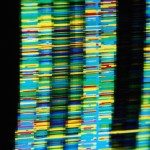Link to Pubmed [PMID] – 10523846
Oncogene 1999 Oct;18(41):5662-71
E-cadherin expression was previously shown to be activated by RB and c-myc specifically in epithelial cells, through interaction with the AP-2 transcription factor. Here we show that only a wild type c-myc gene, coding for the two c-Myc proteins c-Myc2 and c-Myc1, was able to transactivate the E-cadherin promoter, in contrast to c-Myc2 or c-Myc1 alone which strongly repressed E-cadherin in both epithelial cells and fibroblasts. In addition, overexpression of c-myc2 or c-myc1 inhibited c-myc and RB-mediated activation in a dose-dependent manner, suggesting that the ratio of the two c-Myc proteins is essential for transactivation. We also showed by using several mutants of the E-cadherin promoter, that the AP-2 binding sites were the main target of c-myc2- and c-myc1-mediated repression. AP-2-mediated inhibition was cell-type specific, as was the activation. Nevertheless, when high amounts of c-myc2 and c-myc1 were used, a second c-myc-mediated repression was observed, possibly mediated by the Inr sequence of the E-cadherin promoter. However, this repression was independent of cell type. Our results suggest a new way to regulate c-myc transcriptional activity by interfering with the ratio of the two c-myc proteins, which has already been found to be disrupted in vivo in several tumor types.
